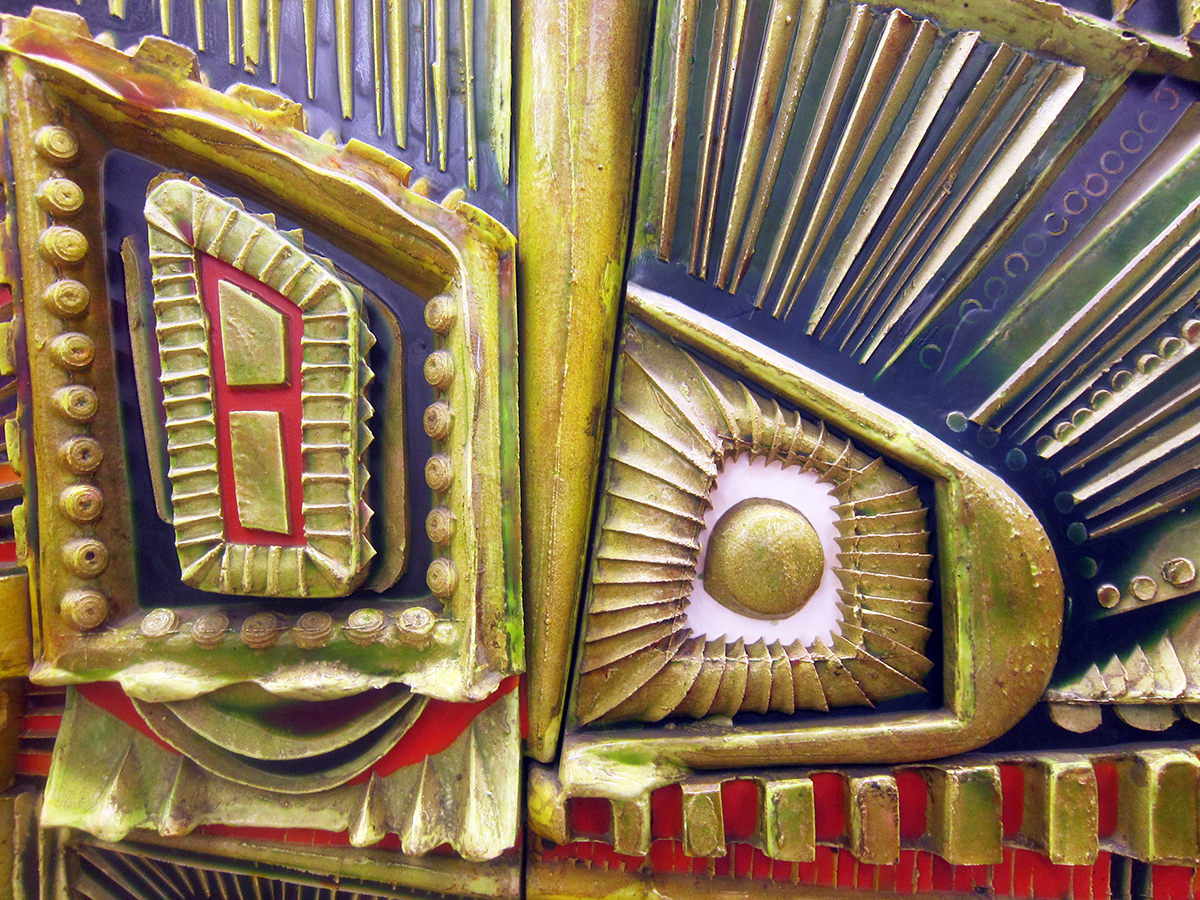How BART Got Art - Page 2
 |
 |
|
|
 |
|
|
 |
|
|
|
|
Also, because some art is so successfully integrated with the architecture, often it is not even recognized as art—not even by the agency that owns it. One such piece is a relief by sculptor William Mitchell along the train tracks at the Embarcadero.
Even worse than not recognizing the artwork, BART has erased some of it and allowed other works to disappear. One attractive abstract mural by the late ceramicist and entrepreneur Win Ng, painted on concrete in Orinda, has been defaced with advertising billboards.
And, insanely enough, one of BART's larger original works, the 37-foot-tall ceramic mural by one of the most famous artists to contribute to the program, Stephen De Staebler, is almost impossible to see. Although it fills the south wall of the Embarcadero Station, a stairway that is rarely used blocks the view.
Another work by De Staebler, a sculptural water feature installed in 1971-'72 at the Concord station, "was deconstructed, without notice to the artist, in the early 1990s," says Jill Therrien, studio archivist for the Stephen De Staebler.
But rather than beating up on BART, as people throughout the Bay Area have been enjoying as a blood sport since at least the late 1950s, let's get positive. Over the years BART's interest in art has risen and fallen.
Now it is rising again, as BART prepares to hire what may be its first-ever art coordinator. The job will entail bringing new artworks to BART—and recent works added to the system have included some fine stuff, like a wall sculpture-light show combo by Dan Corson at an entry to Oakland's 19th Street station.
"It's a question of the civil role of BART," says BART board member Tom Radulovich. "We want the community to take pride in the system."
BART currently has more than 50 works in its collection, says Abigail Thorne-Lyman, a BART planner, including works not on BART property but alongside it, as on the Ohlone Greenway through Berkeley.
Art consultants Regina Almaguer and Jeannene Przyblyski recently produced a study of BART's art program suggesting, among other things, the creation of an "artwork master plan" to ensure "future work that celebrates the unique character, identity, and diversity of each community."




